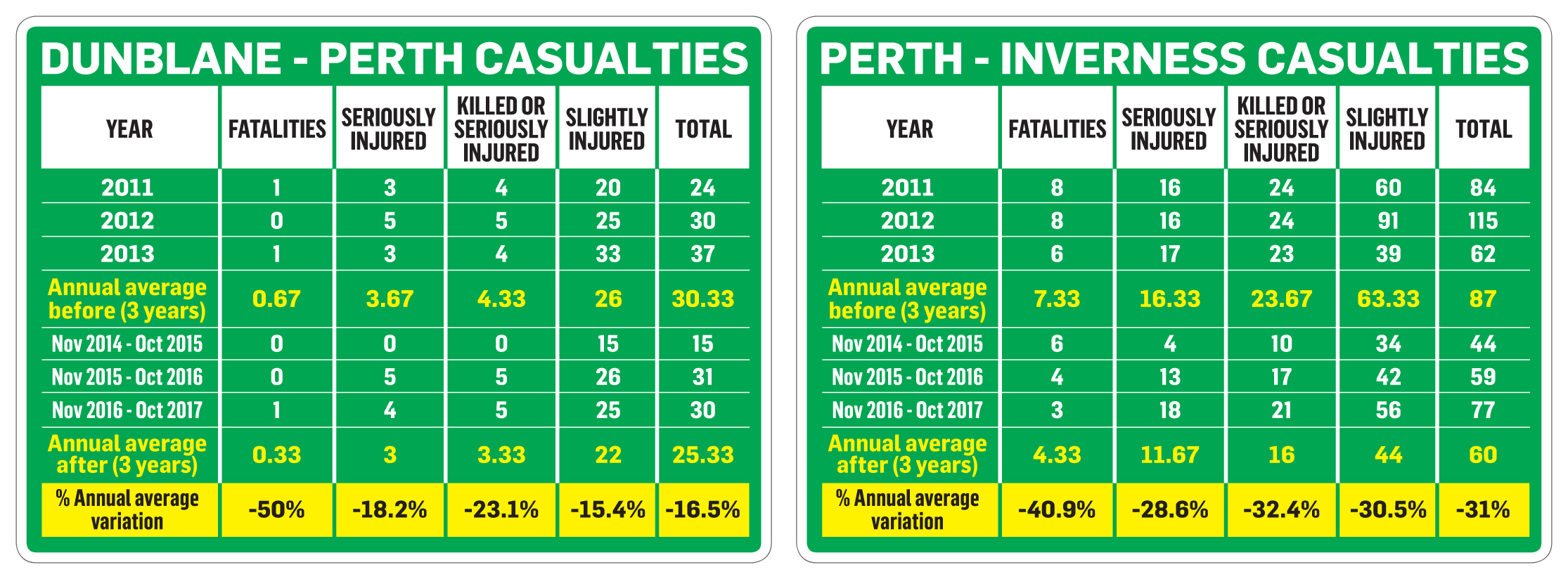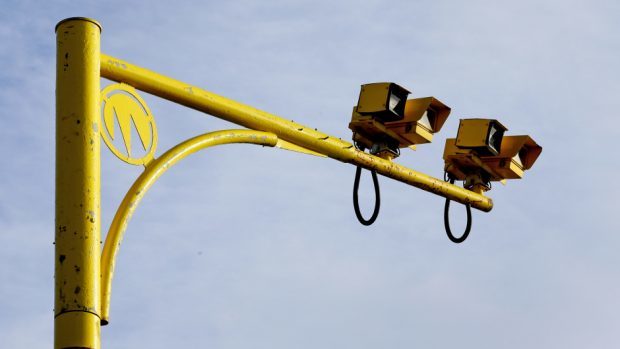Crashes and deaths on the A9 have dropped significantly in the three years since controversial speed cameras were introduced on the notorious stretch of road.
The latest statistics reveal 10 fewer people were killed than in the three years before the cameras went live in November 2014, reducing from 24 to 14 – a drop of 40%.
The number of serious injuries has also reduced by around a quarter, down by 16 to 44, during the three years of them being in operation between Inverness and Dunblane.
the majority of serious accidents occurred on the stretch between the Highland capital and Perth, accounting for 13 deaths and 35 serious injuries.
Supporters of the average speed cameras (ASC) say the latest data proves the success of the scheme.

Road safety campaigners, meanwhile, highlighted that the reduction in accidents and deaths also coincided with the introduction of an increased 50 mph speed limit pilot project for heavy goods vehicles (HGVs) between Perth and Inverness, up from a 40mph limit.
Highlands and Islands MSP David Stewart said: “I welcome any reduction in the number of fatal and serious injury collisions on the A9. However, I still find it strange that the SNP claim this reduction is entirely down to the introduction of the average speed cameras.
“At the same time as the average speed cameras were introduced, so was the increase in the HGV speed.
“By reducing the gap between the slowest and fastest vehicles to 10mph, it was proven that this could reduce congestion and at the same time reduce frustration and allow traffic to flow better.”
Transport Minister Humza Yousaf said: “Behind every statistic lies a tragic story and one of devastation for the families of those involved.
“We should never lose sight of that and we will never be complacent when it comes to road safety. However I also have to pay tribute to the work of the A9 Safety Group and recognise that the speed cameras – which were initially heavily criticised in some quarters – have undoubtedly made the A9 safer.
“Alongside successful education and marketing campaigns driver behaviour has improved. With work on the A9 dualling programme progressing I am confident the route will continue to be a safer place.”
A9 Safety Group chairman Stuart Wilson added: “In addition to the most important point that fatalities and serious injuries have dropped by a significant margin, figures on speeding, journey time, incidents and traffic volumes continue to show a long-term sustained change in driver behaviour, which is extremely encouraging.”
The statistics also reveal the number of vehicles exceeding the speed limit is now one in 15 compared to the historic figure of one in three.
